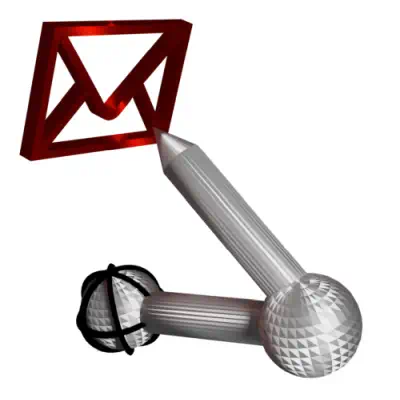AyMINE – Technical documentation
Modules
Integration with ERP Abra Gen
 Task, project & quality management
Task, project & quality management
Manager approval with the task report
Why some data can't be deleted
GDPR and record of qualifications
Qualification of user or contact
Right to Manage Qualifications
Adminitration of areas, projects, calendars
Failure Analysis for an Individual Property of a Component or Process
FMEA – Probability of Detection
FMEA – Probability of Occurrence
 Task, project & quality management
Task, project & quality management
Administration of the Task Management Module
System rights for the task management module
Improvements and Preventive Measures
Methodology and Quality Management systems
What makes up the methodology / SMJ
Problems, tickets and their management
Collaborative Resolution of Multiple Problems
Customer Service Response Generation
Incident and Quality Issue Management
Objects affected by the problem
Problems, Incidents, Helpdesk Tickets
Return project plan by baseline
Sample tasks and methodologies of the area
Effect of the task on the right to modify the attached object
The person responsible for the task
Working procedure – task definition
Management of responsibilities - RACI Matrix
Objects related to the task pattern
 Contacts and directories module (CRM)
Contacts and directories module (CRM)
Address book list and management
Directory or people and companies
Order overview for customer groups
 Contacts and directories module (CRM)
Contacts and directories module (CRM)
System Permissions and CRM Module Settings
Send bulk messages in compliance with GDPR
How to correctly forget a person's details
Unsubscribe and set preferences
for bulk mail
 Web management and automation
Web management and automation
Receiving a message from the web
Human resources
Personalistics – User Permissions and roles
Human Resources module security
Manage department / division data
Overview of Personnel Information for pracov# Employment Contract
Synchronizing staff and system users
 Products, assets and sales
Products, assets and sales
Creating and processing orders
Manage the Property & Business module
Why are the Quality criteria usefull
Managing Finance
Metrics and Measurements
Work summaries from generated data
Technical Modules
Sabre plugin module
Enterprise Architect connector
Database link to Enterprise Architect database
Enterprise Architect connector
System Modules
 The AyMINE Framework Module
The AyMINE Framework Module
AyMINE — Tips for Mobile Usage
Configure how your system looks and works
Gestures and Keyboard Shortcuts
More about how the system works
Private notes and tags for objects
Overview of Modules and Record Types
 Assigning a new task
Assigning a new task 
Assigning a task according to methodologies means clearly specifying who is responsible for what, when to do the work and how. By automating tasks, you can save a lot of work, but most of all help efficient work and collaboration.
Assigning a task is an obvious activity for any team. But it is also the first and one of the most important moments when it is decided whether a team follows workflow or not. There is a fundamental difference whether you assign a task essentially without specifying "somehow do it" or the task includes all the pointless parts:
- Responsibilities in accordance with the RACI matrix
- Terms
- Workflow
- Checking procedure (checklist)
- Clear reference to what to work with (documents, products, clients, etc.)
It goes without saying that manually entering all tasks with everything that should be part of it is not easy. That is why it pays to automate the entry - of course, where it makes sense. Quality management systems should include everything in workflows that is part of the correct assignment - and that's why AyMINE automates the entry of tasks by linking them to their description in the methodology (SMJ) - SMJ becomes the basis for the whole process automation.
When the system creates a new task from workflow (sample task), it assigns the right workers according to the RACI - responsibility matrix. The assignment method varies depending on whether the task is in a project or not.
Assignment of a task to a member of project team
In a project, tasks do not usually arise automatically, but are created by the project manager as part of the planning and assignment of work. They should arise correctly on the basis of the project template. The individual steps in the project template are simultaneously workflows of the project methodology.
In a project task, each task has assigned project responsibilities - RACI matrix of project roles. In creating a task, work workers are assigned to the task according to their roles. (If there are multiple people in a role, the team leader is given the task, who can delegate it.)
If there is no worker in the project with the required role, the project leader is given the task. After the right worker has filled the role, he or she can transfer the task to him or her. However, it is recommended that all mandatory project roles be filled by workers before planning according to the project template.
Note: In project teams, no responsible role setting is used.
Assigning a Task to a Company Area
A task, especially if it arises automatically, must be assigned who is to be assigned the task. Therefore, in a task, the responsible role to whom the task is assigned is assigned.
How does the assignment proceed?
- If there is only one worker assigned the task, the task is assigned to him or her
- If there are multiple people:
- If he has a leadership role, the leader gets the task
- If he does not have a leadership role, the leader gets the task first in the group
If the role is not specified, or if no one is assigned a task, the task is not created!
Note: The qualifications for project roles are not yet used for business area tasks. A business area task is assigned to only one person, the team is not created for him or her.